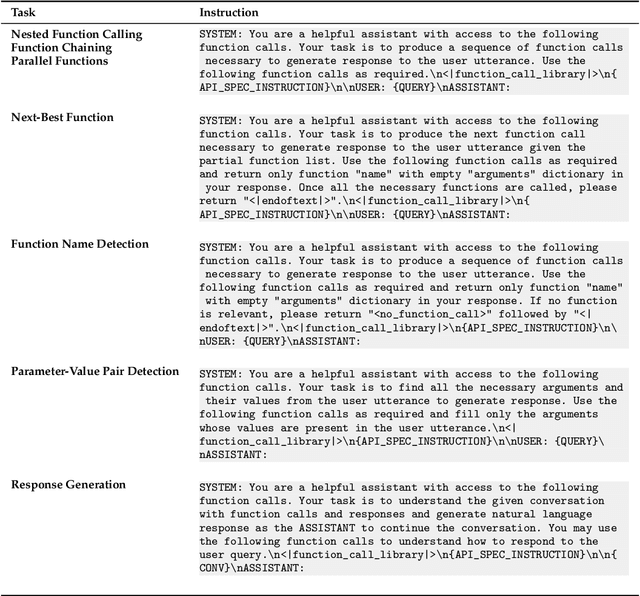Matthew Stallone
Power Scheduler: A Batch Size and Token Number Agnostic Learning Rate Scheduler
Aug 23, 2024Abstract:Finding the optimal learning rate for language model pretraining is a challenging task. This is not only because there is a complicated correlation between learning rate, batch size, number of training tokens, model size, and other hyperparameters but also because it is prohibitively expensive to perform a hyperparameter search for large language models with Billions or Trillions of parameters. Recent studies propose using small proxy models and small corpus to perform hyperparameter searches and transposing the optimal parameters to large models and large corpus. While the zero-shot transferability is theoretically and empirically proven for model size related hyperparameters, like depth and width, the zero-shot transfer from small corpus to large corpus is underexplored. In this paper, we study the correlation between optimal learning rate, batch size, and number of training tokens for the recently proposed WSD scheduler. After thousands of small experiments, we found a power-law relationship between variables and demonstrated its transferability across model sizes. Based on the observation, we propose a new learning rate scheduler, Power scheduler, that is agnostic about the number of training tokens and batch size. The experiment shows that combining the Power scheduler with Maximum Update Parameterization (muP) can consistently achieve impressive performance with one set of hyperparameters regardless of the number of training tokens, batch size, model size, and even model architecture. Our 3B dense and MoE models trained with the Power scheduler achieve comparable performance as state-of-the-art small language models. We open-source these pretrained models at https://ibm.biz/BdKhLa.
Granite-Function Calling Model: Introducing Function Calling Abilities via Multi-task Learning of Granular Tasks
Jun 27, 2024



Abstract:Large language models (LLMs) have recently shown tremendous promise in serving as the backbone to agentic systems, as demonstrated by their performance in multi-faceted, challenging benchmarks like SWE-Bench and Agent-Bench. However, to realize the true potential of LLMs as autonomous agents, they must learn to identify, call, and interact with external tools and application program interfaces (APIs) to complete complex tasks. These tasks together are termed function calling. Endowing LLMs with function calling abilities leads to a myriad of advantages, such as access to current and domain-specific information in databases and knowledge sources, and the ability to outsource tasks that can be reliably performed by tools, e.g., a Python interpreter or calculator. While there has been significant progress in function calling with LLMs, there is still a dearth of open models that perform on par with proprietary LLMs like GPT, Claude, and Gemini. Therefore, in this work, we introduce the GRANITE-20B-FUNCTIONCALLING model under an Apache 2.0 license. The model is trained using a multi-task training approach on seven fundamental tasks encompassed in function calling, those being Nested Function Calling, Function Chaining, Parallel Functions, Function Name Detection, Parameter-Value Pair Detection, Next-Best Function, and Response Generation. We present a comprehensive evaluation on multiple out-of-domain datasets comparing GRANITE-20B-FUNCTIONCALLING to more than 15 other best proprietary and open models. GRANITE-20B-FUNCTIONCALLING provides the best performance among all open models on the Berkeley Function Calling Leaderboard and fourth overall. As a result of the diverse tasks and datasets used for training our model, we show that GRANITE-20B-FUNCTIONCALLING has better generalizability on multiple tasks in seven different evaluation datasets.
Diversity Measurement and Subset Selection for Instruction Tuning Datasets
Feb 04, 2024Abstract:We aim to select data subsets for the fine-tuning of large language models to more effectively follow instructions. Prior work has emphasized the importance of diversity in dataset curation but relied on heuristics such as the number of tasks. In this paper, we use determinantal point processes to capture the diversity and quality of instruction tuning datasets for subset selection. We propose to measure dataset diversity with log determinant distance that is the distance between the dataset of interest and a maximally diverse reference dataset. Our experiments demonstrate that the proposed diversity measure in the normalized weight gradient space is correlated with downstream instruction-following performance. Consequently, it can be used to inform when data selection is the most helpful and to analyze dataset curation strategies. We demonstrate the utility of our approach on various instruction tuning datasets.
 Add to Chrome
Add to Chrome Add to Firefox
Add to Firefox Add to Edge
Add to Edge